Flea Control Guide – Eliminate & Prevent Infestations
Fleas, those tiny, troublesome pests, are a common nuisance for both pet owners and homeowners alike. These minuscule insects, belonging to the order Siphonaptera, feed on the blood of mammals and birds. Measuring only about 2-3 millimeters in length, fleas are known for their exceptional jumping abilities, leaping up to 150 times their body length. Their flattened bodies enable them to move swiftly through the fur or feathers of their hosts, making them notoriously difficult to spot. Flea infestations can lead to various health issues for both pets and humans, including skin irritation, allergic reactions, and the transmission of diseases. Effective flea control methods and prevention strategies are essential for maintaining a healthy and pest-free environment in homes and for the well-being of our furry companions.
The different species of fleas
Fleas, commonly known as blood-sucking parasites, come in various species, each with its own unique characteristics. Understanding these different species is crucial for effective flea control. The most prevalent species that trouble our pets and homes include:
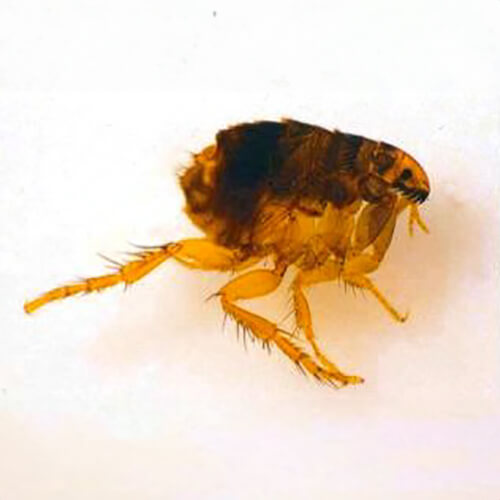
Ctenocephalides felis (Cat Flea)
These fleas are the most widespread and are known for infesting not only cats but also dogs and even humans. They are responsible for the majority of flea-related issues in households.
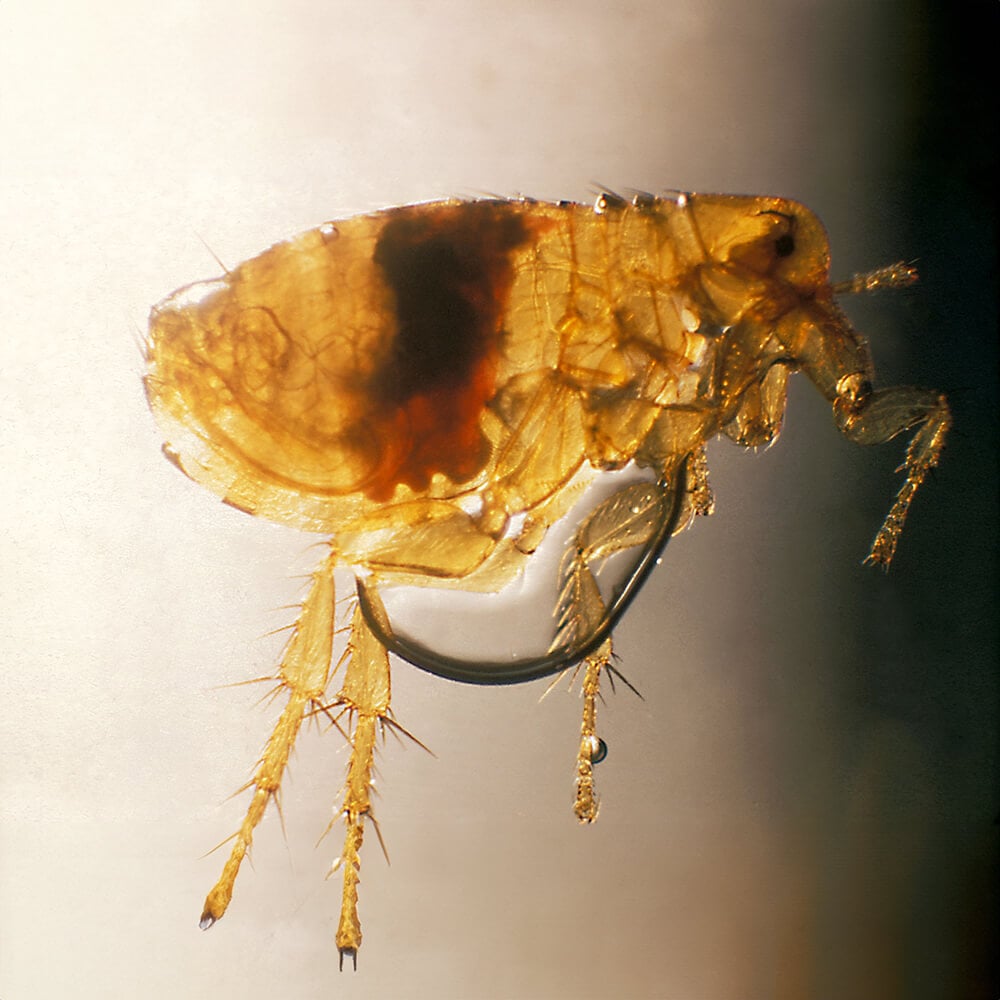
Xenopsylla cheopis (Rat Flea)
These fleas primarily infest rodents, particularly rats, but can bite humans, potentially transmitting diseases like the bubonic plague.

Ctenocephalides canis (Dog Flea)
Though primarily associated with dogs, these fleas can also infest cats and other mammals. They are slightly larger than cat fleas but share similar behaviors.
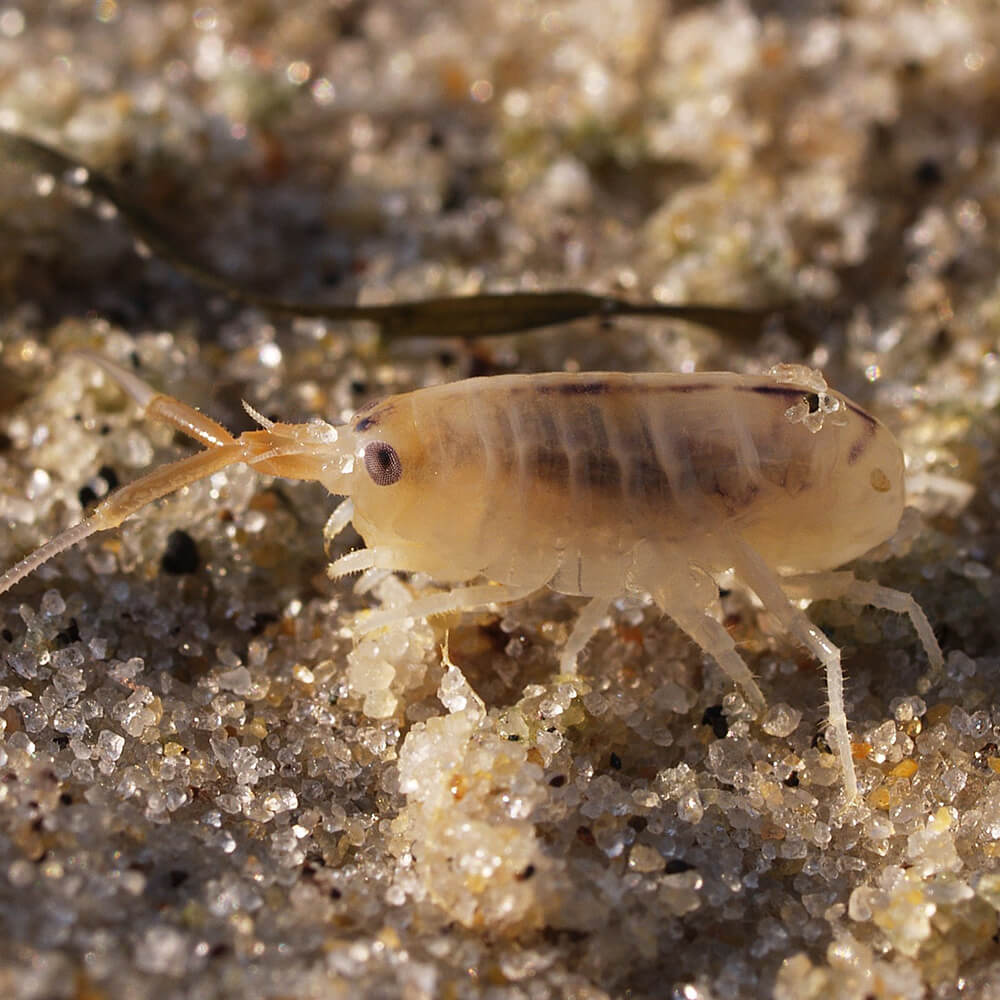
Tunga penetrans (Sand Flea or Chigoe Flea)
These unique fleas burrow into the skin, usually on the feet, causing severe irritation and discomfort. They are commonly found in tropical and subtropical regions.
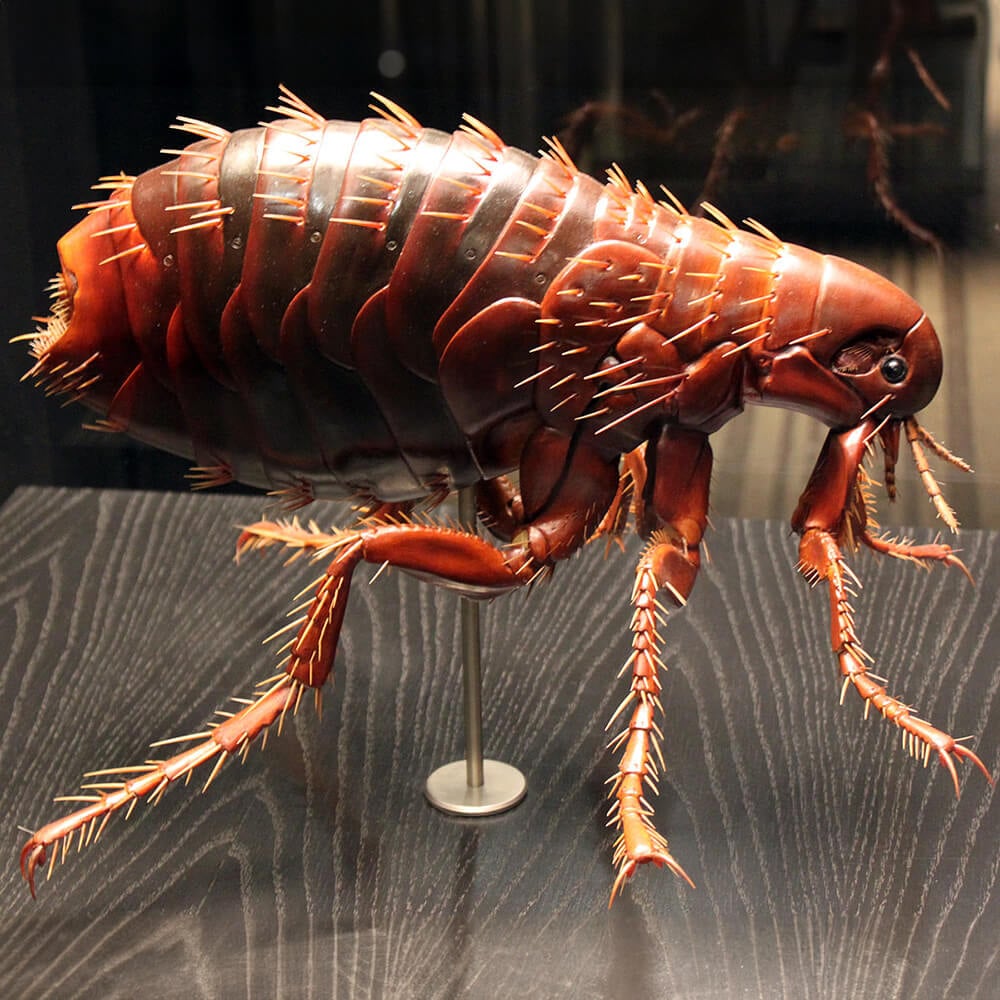
Pulex irritans (Human Flea)
As the name suggests, these fleas primarily target humans. They are less common than cat and dog fleas but can still cause discomfort and itching when they infest homes.
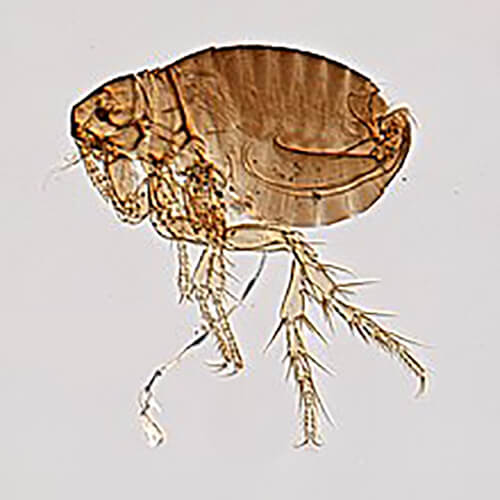
Echidnophaga gallinacea (Sticktight Flea)
These fleas infest poultry, particularly chickens, and can cause significant problems for backyard poultry keepers.
Knowing the specific species involved in an infestation can help tailor treatment and prevention strategies. Regular pet grooming, maintaining clean living spaces, and consulting with a veterinarian or pest control expert can all play crucial roles in managing flea problems associated with these different species.
There are over 2,500 species of fleas worldwide, but the most common flea that infests pets is the cat flea (Ctenocephalides felis).
The life cycle of fleas
Understanding the life cycle of fleas is essential for effective flea control. Fleas undergo a complete metamorphosis, consisting of four distinct stages:

Egg Stage
Fleas begin their life cycle as tiny, oval-shaped eggs. These eggs are often laid on the host animal (pets like cats and dogs) but can also fall into the environment, such as bedding or carpeting. The eggs are resistant to many environmental conditions and hatch within 2 to 14 days.

Pupa Stage
Larvae spin a silken cocoon around themselves, entering the pupal stage. This protective cocoon is sticky and often camouflaged with debris. Inside the cocoon, the larvae undergo a transformation, eventually developing into adult fleas. The pupal stage can last anywhere from a few days to several months, depending on environmental conditions.
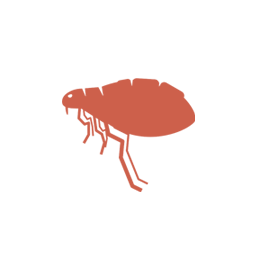
Nymph Stage
Once the eggs hatch, they release larva that are small, legless, and feed on organic matter, including flea feces and dead skin cells. They avoid light and prefer dark, hidden areas like cracks in the floor or carpets. During this stage, they undergo several molts.

Adult Stage
Once the transformation is complete, adult fleas emerge from their cocoons. They are immediately hungry for blood and seek out a host. This is the stage where fleas can cause discomfort and transmit diseases to their hosts. Adult fleas typically live for several weeks to several months, depending on their access to a host and environmental conditions.
Understanding the life cycle of fleas is crucial because effective flea control involves targeting all stages of development. This includes treating pets, cleaning their environment, and using insecticides that can eliminate eggs, larvae, pupae, and adult fleas. Regular preventive measures are key to breaking the flea life cycle and keeping both pets and homes flea-free.
A single female flea can lay up to 50 eggs per day, and hundreds or even thousands during her lifetime. This rapid reproduction is one reason why flea infestations can quickly get out of control.
The seasons most conducive to fleas
Flea infestations can be influenced by seasonal changes, with certain times of the year being more conducive to flea activity. Understanding these patterns can help in effective flea prevention and control. Here are the seasons when fleas tend to thrive:

Spring
Spring is often considered the kickstart for flea season. As temperatures rise and humidity levels increase, flea eggs laid during the previous fall and winter begin to hatch. This results in a sudden surge in flea activity as newly emerged adults seek hosts for blood meals. Pet owners should be especially vigilant during this time.

Early Fall
Flea populations can remain robust into early fall, as the warmer temperatures persist. It’s essential to maintain flea prevention efforts during this period to prevent infestations from continuing or worsening.
Summer
Fleas thrive in warm and humid conditions, making summer the peak of flea season in many regions. High temperatures and humidity provide an ideal environment for flea reproduction and development. Pets spending time outdoors are at higher risk, and indoor environments can also become infested if preventive measures aren’t in place.
Late Fall/Winter
Flea activity tends to decline as temperatures drop. However, it’s important to note that fleas can still survive indoors during the winter months, especially in well-heated homes. Flea control and prevention should continue year-round to ensure that infestations don’t reemerge when conditions become more favorable.
To safeguard your pets and home from fleas, it’s essential to adopt a proactive approach to flea prevention and control. This includes regular pet grooming, using flea preventatives recommended by veterinarians, and maintaining a clean living environment. Understanding the seasonal fluctuations in flea activity can help you tailor your prevention efforts for maximum effectiveness.
Some pets and humans are allergic to flea saliva. This condition, known as flea allergy dermatitis (FAD), can lead to severe itching, skin irritation, and hair loss.
Where do fleas come from, their habitat.
Fleas, those pesky little insects, have distinct origins and habitats that contribute to their prevalence. Understanding where fleas come from is essential for effective prevention and control. Here’s a closer look at their origins and preferred habitats:

Wildlife and Animals
Fleas often originate from wildlife such as squirrels, raccoons, and opossums, which can introduce these parasites into the environment. Domestic animals like cats, dogs, and rodents are also common sources of fleas. When these animals are infested, they can shed flea eggs and larvae into their surroundings, including your home or yard.

Indoor Environments
Fleas can find their way indoors through infested pets or by hitching a ride on clothing, shoes, or other objects. Once inside, they can infest carpets, bedding, and furniture, making indoor environments conducive to their reproduction.

Nesting Areas
In the wild, fleas often inhabit the nests of their host animals, using the nest materials as protection. When these animals abandon their nests or if the nests are disturbed, flea eggs and larvae can become scattered, leading to potential infestations.

Outdoor Environments
Fleas thrive in outdoor areas where they can find suitable hosts. Tall grass, leaf litter, and shaded areas provide ideal conditions for flea development. Yards, parks, and gardens can become hotspots for fleas, especially during warm and humid seasons.

Climate and Seasonal Factors
Fleas tend to be most active in regions with warm, humid climates. High temperatures and humidity levels create optimal conditions for flea development. However, fleas can adapt to a wide range of environments, including those with milder climates.
Understanding the origins and habitats of fleas is crucial for effective flea prevention. To minimize the risk of infestation, it’s important to regularly check and treat pets for fleas, maintain a clean living space, and consider outdoor pest control measures if necessary. By addressing both indoor and outdoor environments, you can help keep fleas at bay and ensure a comfortable, flea-free living environment for you and your pets.
Fleas are ectoparasites, which means they feed on the blood of their hosts. Their bites can cause itching, allergic reactions, and transmit diseases such as bubonic plague and typhus.
What attracts fleas into our homes
Fleas can be attracted to our homes for various reasons, and understanding these factors is key to effective flea prevention. Here are some common attractions that draw fleas into our living spaces:
Pets
One of the primary factors that attract fleas into homes is the presence of pets, particularly dogs and cats. Fleas can easily hitch a ride on your furry companions, making them unwitting carriers of these pests. Once inside, fleas infest not only the pets but also the surrounding environment.
Cracks and Crevices
Fleas are skilled at hiding in hidden areas. Gaps in floorboards, cracks in walls, and crevices in furniture can provide ideal hiding spots for fleas and their offspring.
Lack of Pest Control
Without regular pest control measures, such as flea prevention treatments for pets or home treatments, fleas can establish themselves and reproduce in our living spaces.
Wildlife
Wildlife like squirrels, raccoons, and rodents can introduce fleas into the vicinity of homes. Fleas often use these animals as hosts, and when they come into contact with your property, they can leave behind flea eggs and larvae.
Fabric and Carpeting
Flea larvae feed on organic matter, including dried blood, dead skin cells, and other debris. Carpets, rugs, and upholstered furniture offer a cozy environment for flea larvae to thrive.
Indoor Warmth
Fleas are more active in warmer environments, so the climate-controlled conditions within our homes can encourage their activity. Central heating systems during the colder months provide an appealing environment for fleas.
Human Activity
Fleas can be inadvertently introduced into homes by human activity. They can hitch a ride on clothing, shoes, or belongings after spending time in infested areas, such as parks, yards, or pet-friendly spaces.
To prevent fleas from being attracted to your home, it’s crucial to implement preventive measures. Regularly check and treat pets for fleas, maintain a clean living environment, vacuum frequently, and consider using flea-repellent products. Additionally, sealing gaps and cracks in your home and addressing any wildlife issues near your property can help reduce the risk of flea infestations.
Fleas are tiny, usually measuring around 1-2 millimeters in length, but they are built for survival. They have strong hind legs for jumping and sharp mouthparts for piercing and feeding on blood.
Signs that you have a fleas’ infestation
Recognizing the signs of a flea infestation is crucial for taking prompt action to eliminate these bothersome pests from your home. Here are common indicators that you may have a flea infestation:
Visible Fleas
The most obvious sign is spotting adult fleas on your pets, yourself, or in your living spaces. Adult fleas are small, reddish-brown insects about 1-2 mm long and can often be seen jumping or crawling.
Flea Dirt
Flea feces, also known as flea dirt, looks like small black or brown specks and can often be found on your pet’s skin or in their bedding. When wet, flea dirt can turn reddish-brown due to the digested blood content.
Visible Flea Eggs and Larvae
Flea eggs are tiny, white, and oval-shaped, while flea larvae are tiny, worm-like creatures that may be seen in pet bedding, carpets, or cracks in the floor.
Fleas in the Environment
Fleas can infest your home, particularly carpeted areas and pet bedding. If you notice small jumping insects in your living spaces, it’s a clear sign of an infestation.
Itchy Pets
If your pets are constantly scratching, biting, or grooming themselves excessively, it may be a sign of flea bites. Look for red, itchy skin, flea dirt (tiny black specks), or tiny white flea eggs in their fur.
Excessive Grooming
Cats and dogs may exhibit excessive grooming behavior when infested with fleas. They may lick, chew, or scratch themselves more than usual to relieve itching.
Pets Losing Hair
Flea infestations can lead to hair loss in pets due to excessive scratching and biting. Check for bald patches or thinning fur.
Red Bites on Humans
Flea bites on humans often appear as small, red, itchy bumps, usually concentrated on the lower legs and ankles. They may appear in clusters or lines.
Unexplained Allergies
Flea saliva can trigger allergic reactions in pets and humans. If you or your pets develop unexplained allergies, especially during warmer months, fleas could be the culprit.
Restless Behavior
Infested pets may display restless behavior, including pacing, agitation, or difficulty resting comfortably.
If you suspect a flea infestation, it’s essential to take action promptly to prevent the problem from worsening. Consult with a veterinarian for pet treatments and consider professional pest control services to effectively eliminate fleas from your home and prevent future outbreaks.
Fleas can survive for extended periods without a blood meal, thanks to their ability to enter a dormant state. This allows them to endure adverse conditions and emerge when a suitable host is nearby.
Rooms where fleas hide
Fleas can hide and thrive in various areas of a home, especially if there are pets present. Here are common places where fleas may hide:

Pets
Fleas often infest cats and dogs. They can hide in your pets’ fur and bedding. Regular grooming and the use of flea prevention products can help control fleas on your pets.
Bedding
Fleas can infest bedding, including mattresses, pillows, and blankets. Washing and cleaning bedding regularly can help reduce flea populations.
Pet Toys and Accessories
Fleas can hide in or on pet toys, leashes, and accessories. Regularly cleaning and treating these items can prevent flea infestations.
Carpeting
Fleas can lay eggs in carpet fibers, and their larvae can hide deep within the carpet. Frequent vacuuming and steam cleaning can help eliminate fleas in carpets.
Cracks and Crevices
Flea eggs and larvae can hide in cracks and crevices in the floors and walls. Sealing these gaps and vacuuming thoroughly can help eliminate hiding spots for fleas.
Basement and Crawl Spaces
Fleas may also hide in damp and dark areas of the home, such as basements or crawl spaces. Proper insulation and sealing can help keep fleas out.
Furniture
Fleas can hide in upholstery and cushions. Regular cleaning and vacuuming of furniture can help control fleas in these areas.
Yard and Garden
Fleas may hide outdoors in the yard, especially in shaded areas, tall grass, or near shrubs. Regular yard maintenance and the use of flea control products can help prevent outdoor flea infestations.
Wildlife
Fleas can be carried into your home by wildlife, such as rodents or squirrels. Make sure any entry points for these animals are sealed.
To address a flea infestation, it’s essential to take a comprehensive approach. This includes treating your pets with flea control products, thoroughly cleaning your home, vacuuming frequently, and possibly using insecticides or hiring a pest control professional if the infestation is severe. Outdoor flea control may also be necessary to prevent reinfestation. Always follow the guidance on flea control products and consult with a veterinarian for advice on treating and preventing fleas on your pets.
The dangers and damages that fleas can cause
Fleas may be small, but the dangers and damages they can inflict should not be underestimated. These tiny parasites can pose several health risks and cause various issues for both pets and humans. Here’s an overview of the potential dangers and damages associated with fleas:
Skin Irritation
Flea bites can result in skin irritation and discomfort for both pets and humans. Itchy red bumps can develop, leading to scratching, which can further damage the skin and potentially lead to secondary infections.
Anemia
Fleas are blood-feeding parasites, and in severe infestations, they can cause anemia in pets, particularly in young animals or those with weakened immune systems. Anemia can lead to weakness, lethargy, and in severe cases, even death.
Flea-Borne Illnesses
Fleas can transmit diseases to humans, including murine typhus and cat scratch fever. These illnesses can result in flu-like symptoms, fever, and complications if left untreated.
Psychological Stress
Constant itching and discomfort caused by flea infestations can lead to psychological stress in both pets and their owners. Pets may become anxious or agitated, while owners may experience frustration and concern for their pet’s well-being.
Allergic Reactions
Some individuals and pets are hypersensitive to flea bites and may experience severe allergic reactions. This condition, known as flea allergy dermatitis (FAD), can lead to intense itching, hair loss, and skin infections.
Disease Transmission
Fleas are capable of transmitting various diseases and parasites, including tapeworms and Bartonella bacteria. Pets can become infected through flea bites, and humans may also be at risk if bitten by infected fleas.
Secondary Infections
Excessive scratching due to flea bites can break the skin, leading to open sores and secondary bacterial infections. Pets are particularly vulnerable to these complications.
Home Infestation
Fleas can reproduce rapidly and infest your home, particularly in carpets, bedding, and furniture. This can lead to a persistent and challenging problem that requires thorough pest control measures.
To mitigate the dangers and damages caused by fleas, it’s crucial to adopt preventive measures, including regular flea control for pets, maintaining a clean living environment, and seeking prompt treatment if a flea infestation is suspected. By addressing fleas proactively, you can protect the health and well-being of both your pets and your family.
Fleas played a significant role in the transmission of the bubonic plague during historical pandemics. They would bite infected rodents and then bite humans, spreading the disease.
How to get rid of fleas / Available treatments.
Getting rid of fleas requires a comprehensive approach that targets fleas on both your pets and in your home. Fortunately, there are several effective treatments available to help you tackle a flea infestation.
Flea Treatments for Pets
- Flea Preventatives: Consult your veterinarian for prescription or over-the-counter flea preventatives, including topical treatments, oral medications, and flea collars. These products kill adult fleas and may also disrupt the flea life cycle.
- Flea Baths and Shampoos: Flea shampoos and baths are designed to eliminate existing fleas on your pets. Follow the instructions carefully to ensure effectiveness.
- Flea Combs: Regularly comb your pets with a fine-toothed flea comb to physically remove fleas and their eggs.
Environmental Maintenance
- Regular Cleaning: Maintain cleanliness in your home by reducing clutter and vacuuming regularly. This helps prevent flea eggs and larvae from hiding in cracks and crevices.
- Pet Bedding: Wash and replace your pet’s bedding frequently to eliminate flea habitats.
- Outdoor Pest Control: Trim tall grass, remove leaf litter, and use outdoor flea treatments as needed to reduce the presence of fleas in your yard.
Home Treatments
- Vacuuming: Vacuum your home thoroughly, focusing on areas where your pets spend time. Dispose of the vacuum bag or clean the canister to prevent fleas from re-infesting your home.
- Washing Bedding and Fabrics: Wash your pet’s bedding, your own bedding, and any fabric items they frequently use in hot water to kill fleas and larvae.
- Steam Cleaning: Steam cleaning carpets and upholstery can effectively kill fleas at various life stages due to the high temperature.
- Flea Sprays and Foggers: Use flea sprays or foggers designed for indoor use to treat infested areas. Follow the instructions and ensure you and your pets are out of the treated area during application.
- Outdoor Pest Control: Consider treating your yard and outdoor areas with flea control products to prevent re-infestation from the environment.
Professional Pest Control
- In severe infestations or persistent cases, consider consulting a professional pest control service. They can employ specialized treatments to eliminate fleas effectively.
Remember that consistency is key when dealing with fleas. Treat your pets year-round with preventive products and maintain a clean living environment to minimize the risk of future infestations. Always consult with your veterinarian for the most appropriate flea control products for your pets, and follow product labels and usage instructions for optimal results.
Over the years, various methods have been developed to control flea infestations, including flea collars, topical treatments, oral medications, and flea traps. Advances in pest control technology continue to improve the efficacy of flea prevention and elimination.
How to prevent fleas infestations
Preventing flea infestations is often more manageable and cost-effective than treating an existing problem. By implementing proactive measures, you can protect your pets and home from these troublesome pests.
Use Flea Preventatives for Pets
- Consult your veterinarian to select the right flea preventative for your pets. Options include topical treatments, oral medications, and flea collars.
- Administer flea preventatives year-round, especially if you live in an area with a warm climate where fleas can thrive year-round.
Outdoor Prevention
- Keep your yard and outdoor areas well-maintained. Trim tall grass and remove leaf litter to minimize flea habitats.
- Consider using outdoor flea control products or consulting with a pest control professional if your yard is prone to fleas.
Regular Veterinary Check-Ups
- Schedule routine veterinary check-ups for your pets. Your vet can help monitor their overall health and recommend appropriate flea preventatives.
Regular Grooming
- Brush and groom your pets regularly. This not only helps remove fleas and their eggs but also provides an opportunity to check for any signs of infestation.
Prevent Wildlife Infestations
- If you have wildlife near your home, take steps to deter them. Secure trash cans and close off access points to your home to prevent wildlife from introducing fleas.
Be Vigilant
- Keep an eye out for signs of fleas, such as excessive scratching or skin irritation. Early detection can help prevent a full-blown infestation.
Maintain Clean Living Spaces
- Vacuum your home frequently, paying special attention to areas where your pets spend time.
- Wash your pet’s bedding, your bedding, and any fabric items they use regularly.
- Consider using pet-friendly, anti-flea sprays or powders on pet bedding.
Pet Socialization and Boarding
- When socializing your pets or boarding them, ensure that the facility has effective flea control measures in place.
Educate Yourself
- Learn about the flea life cycle and behaviors to better understand how to prevent and address infestations effectively.
By taking these preventative measures, you can significantly reduce the risk of flea infestations and provide a comfortable, pest-free environment for your pets and family. Remember that consistency in preventive measures is key to long-term success in keeping fleas at bay.
Conclusion
In conclusion, fleas are remarkable yet troublesome creatures that have coexisted with animals, including humans, for centuries. Their extraordinary jumping abilities, tiny size, and prolific breeding make them both fascinating and formidable. However, the discomfort and health risks they pose to pets and people alike cannot be overlooked. Fleas, with their historical association with disease transmission, serve as a reminder of the importance of effective prevention and control measures.
Whether it’s the diligent care of our pets, the cleanliness of our living spaces, or the awareness of early signs of infestation, staying proactive in flea management is paramount. Through responsible pet ownership, regular veterinary check-ups, and maintaining hygienic environments, we can mitigate the risks associated with fleas and provide a safe, comfortable existence for our beloved companions. The resilience and adaptability of fleas make them a persistent challenge, but with knowledge and vigilance, we can keep these tiny pests at bay and ensure a pest-free and peaceful coexistence for all.
